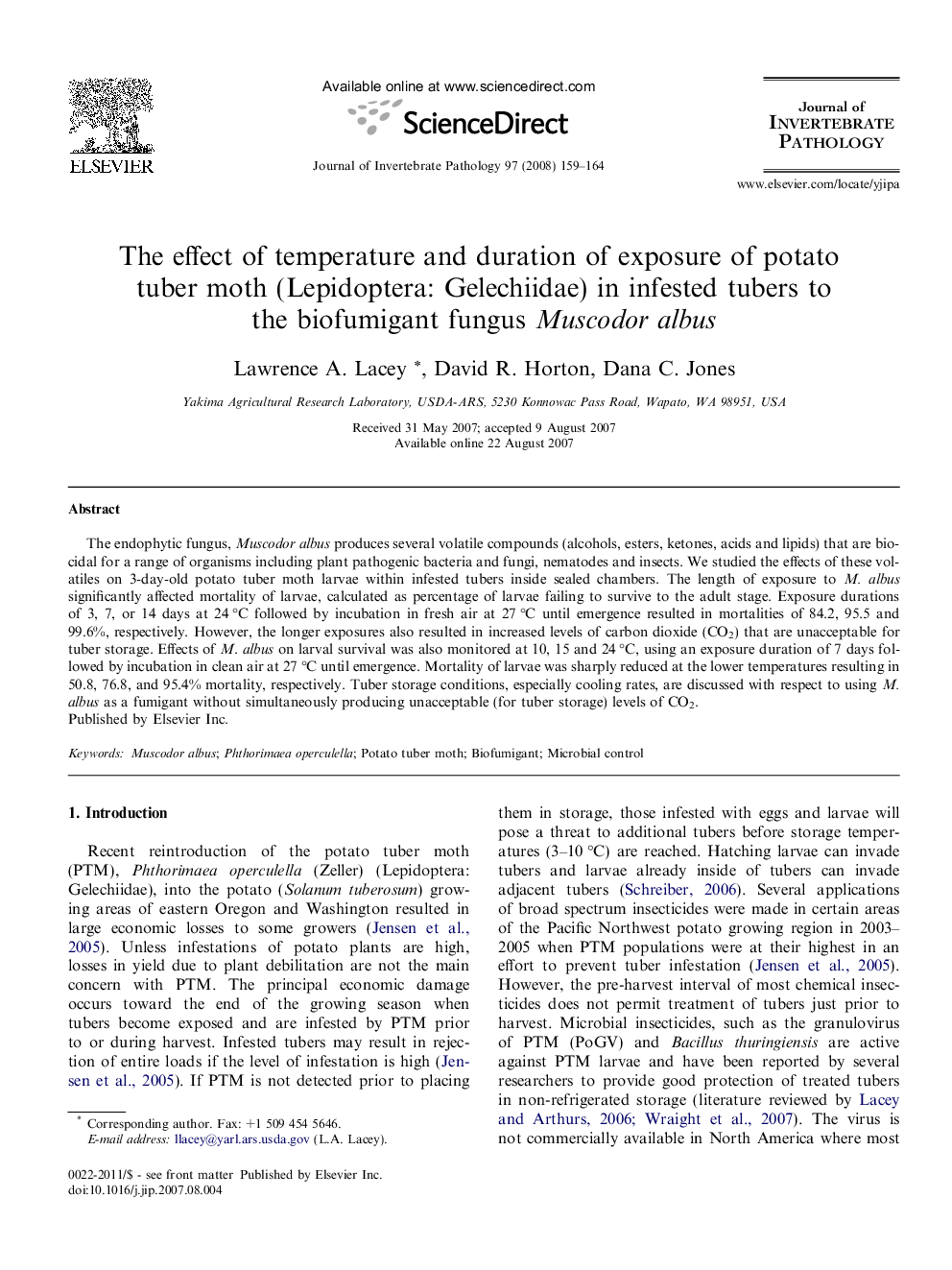| Article ID | Journal | Published Year | Pages | File Type |
|---|---|---|---|---|
| 4558703 | Journal of Invertebrate Pathology | 2008 | 6 Pages |
The endophytic fungus, Muscodor albus produces several volatile compounds (alcohols, esters, ketones, acids and lipids) that are biocidal for a range of organisms including plant pathogenic bacteria and fungi, nematodes and insects. We studied the effects of these volatiles on 3-day-old potato tuber moth larvae within infested tubers inside sealed chambers. The length of exposure to M. albus significantly affected mortality of larvae, calculated as percentage of larvae failing to survive to the adult stage. Exposure durations of 3, 7, or 14 days at 24 °C followed by incubation in fresh air at 27 °C until emergence resulted in mortalities of 84.2, 95.5 and 99.6%, respectively. However, the longer exposures also resulted in increased levels of carbon dioxide (CO2) that are unacceptable for tuber storage. Effects of M. albus on larval survival was also monitored at 10, 15 and 24 °C, using an exposure duration of 7 days followed by incubation in clean air at 27 °C until emergence. Mortality of larvae was sharply reduced at the lower temperatures resulting in 50.8, 76.8, and 95.4% mortality, respectively. Tuber storage conditions, especially cooling rates, are discussed with respect to using M. albus as a fumigant without simultaneously producing unacceptable (for tuber storage) levels of CO2.
